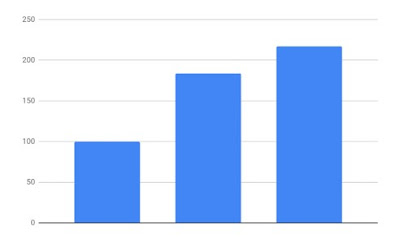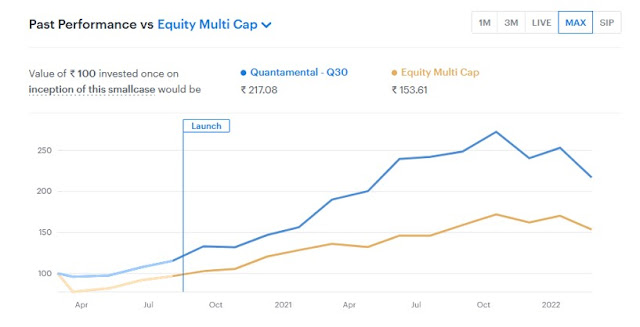Reading across disciplines is one of the best ways to improve our investment acumen. Here is a summary of some of the best articles I read this week. If you like this collection, consider forwarding it to someone who you think will appreciate it.
You can sign up to https://www.getrevue.co/profile/intelsense to receive all blogs from me directly into your inbox.
Income =/= Wealth
Part of the reason people don’t feel better off is because financial progress is better measured by wealth, not income. And wealth is just the accumulation of income you haven’t spent. So a lot of people are the financial equivalent of the exerciser who burns 500 calories then immediately offsets it with dessert and is frustrated by the lack of progress despite working so hard.
Wealth is what you don’t spend, which makes it invisible and hard to learn about by observing other people’s lives. Spending is contagious; wealth is mysterious.
Money is often a negative art. What you don’t do can be more important than what you actively do.
Everything has a price, and prices aren’t always clear. The price of exercise isn’t just the workout; it’s avoiding the post-workout urge to eat a ton of food. Same in finance. The price of building wealth isn’t just the trouble of earning money or dealing; it’s avoiding the post-income urge to spend what you’ve accumulated.
https://www.collaborativefund.com/blog/after-the-fact/
How Computational Drug Discovery Is Boosting Health Tech Innovation
The process of drug discovery is extremely complex and requires time and resources to isolate the molecules capable of identifying the properties of a disease or virus. Health institutions are becoming increasingly dependent on the ability of computational drug discovery (CDD) to speed up and automate factors such as analytics and large-scale simulations for the trial process. To efficiently do this, drug developers are leveraging emerging technologies such as artificial intelligence and machine learning.
On average, new drugs take 10-15 years to reach the market, and half of that time is spent on clinical trials. AI’s ability to analyse a wealth of data in real time can help accelerate this part of the process by identifying diseases more clearly.
Similar time-saving outcomes can be enjoyed through machine learning (ML), a subfield of artificial intelligence. ML in drug discovery can use algorithms that recognise familiar patterns within sets of data that have been further classified. Deep learning (a subfield of ML) then engages artificial neural networks to mimic the transmission of electrical impulses in the human brain. This helps drug developers discover the effects of a drug molecule before commencing trials.
Why Are Polar Bears Migrating To Russia From Alaska?
The drop-in polar bear population is being credited to polar bears’ migration to Russia from Alaska due to rising temperatures in Alaska. In the last 50 years, Alaska’s annual average temperature rose by 4.8 degrees Celsius. This rise has resulted in the loss of sea ice that directly affects the bears by redistricting their hunting ground.
The migration has resulted in a booming increase in polar bear numbers in Russia’s Wrangel Island.
While the bears can fast for months, their survival depends on how much energy they've managed to reserve through eating ahead of time, the energy they expend during the fast and how long a fasting period lasts.
In at least two regional groups of polar bears, prolonged fasting periods have already been shown to negatively affect their body condition, reproduction rates and size of their populations. This trend is expected to be seen across groups of polar bears in the Arctic as ice loss continues.
Polar bears have long been the poster child of the consequences of climate change. There are an estimated 22,000 to 31,000 polar bears in the wild, according to the World Wildlife Fund, although precise numbers are hard to determine due to their remote habitat. The species is listed as vulnerable.
Take Breaks While the Sun Shines!
Historically, there is something quite curious about the all-encompassing work ethic of many of today’s masters of the universe. For Andrew Carnegie, at one point the world’s richest man, diligence, perseverance, and industry were virtues to be preached—not practiced. The successful man of business was not a wage slave, paid by the hour or the day or the task, and he should not behave as if he were. Manually laboring drudges might work long hours without sacrificing productivity, but businessman could not. Their work required imagination, thought, calculation.
“Your always-busy man accomplishes little;” Carnegie wrote in 1883, “the great doer is he who has plenty of leisure. Moral: Don’t worry yourself over work, hold yourself in reserve, and sure as fate, ‘it will all come right in the wash.’” The American penchant for delaying gratification, for putting off retirement, for working ceaselessly, for refusing or cancelling or postponing or cutting short vacations was, the Scottish-born Carnegie believed, monstrously self-defeating. It sapped the creativity the man of business required to move forward. Americans, he remarked to his cousin, “were the saddest-looking race … Life is so terribly earnest here. Ambition spurs us all on, from him who handles the spade to him who employs thousands. We know no rest. … I hope Americans will find some day more time for play, like their wiser brethren upon the other side.”
https://octavian.substack.com/p/take-it-easy-david-nasaw-on-the-work
Growing plants in the desert by harvesting water out of thin air
Like all conventional crops, spinach needs water to grow. But, in this case, the spinach sprouted thanks to a solar-powered system that pulled vapor from the air and condensed it into two liters of water. The results of the experiment suggest that small farms in remote, arid regions can grow their own crops without a water supply.
We’re in the Saudi Arabian desert. Where is all that moisture coming from? Deserts may be dry, but that’s not to say there are no moisture particles in the air. The relative humidity in the region revolves around 40%, but Wang says it’s closer to 80% at night. As a result, the hydrogel material typically absorbs water vapor during the evening and at night. “We designed the system this way; nature asked us to,” says Wang.
By the morning, the material is saturated with moisture, so when the sun hits the solar panels, and the heat from the solar panels comes into contact with the material, it turns the moisture into vapor and drives it out of the hydrogel layer. The metal box below then collects the vapor and condenses it into water. The best part? None of these steps consume the electricity generated by the solar panel, meaning that if the system gets scaled up, the electricity produced by the panels could be fed directly into the grid, and the heat produced by the panels could be used to grow crops.











